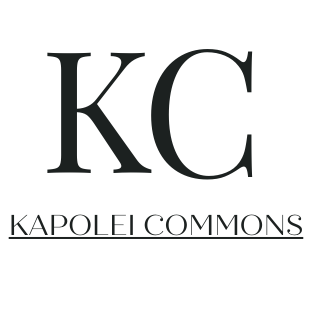Are mounting bills keeping you up at night? If you’re weighed down by debt, knowing your options is the key to regaining control over your finances.
Two of the most common debt solutions available in Canada are consumer proposals and bankruptcy.
Each option can help you eliminate overwhelming debts, but the right choice depends on your unique circumstances and long-term goals.
This post on https://oakmangroup.com/ will walk you through a clear, professional comparison between consumer proposals and bankruptcy.
You’ll learn what each involves, their pros and cons, and how choosing the right solution can affect your everyday life, credit, and future financial health.
By the end, you’ll be empowered to take the next step toward financial confidence with the help of a Licensed Insolvency Trustee like the experts at Oakman Group.
Understanding Your Debt Relief Choices
Financial stress is more than numbers on a page. It affects your peace of mind, self-esteem, relationships, and even your health.
Canadians facing persistent creditor calls or the threat of wage garnishment often turn to professional help for relief. At its core, getting out of debt comes down to finding a repayment plan that suits your situation.
What Is a Consumer Proposal?
A consumer proposal is a formal, legally binding agreement arranged through a Licensed Insolvency Trustee.
It allows you to offer your creditors a partial repayment of your debts, typically with reduced monthly payments spread out over up to five years.
Key Features:
- You keep your assets (including your home and car).
- Interest stops accruing on unsecured debts.
- Collection actions and wage garnishments are halted.
- Most debts are eligible, except secured loans (like mortgages or car loans).
- Requires creditor approval, but the majority of proposals are accepted.
What Is Bankruptcy?
Bankruptcy is a legal process designed to provide a fresh start by wiping out most unsecured debts. When you declare bankruptcy, your non-exempt assets may be sold by your Licensed Insolvency Trustee to repay creditors.
Key Features:
- Immediate stop to collection calls, lawsuits, and wage garnishments.
- Most unsecured debts are discharged at the end of the process.
- May require surrendering certain non-exempt assets.
- Lasts a minimum of 9 months for a first-time bankrupt with no surplus income.
- Has a significant impact on your credit rating.
Comparing Cost and Process
Both consumer proposals and bankruptcy involve costs regulated by Canadian law. However, each process is structured differently and affects your life in distinct ways.
Monthly Payments and Fees
- Consumer Proposal: Payments are fixed, negotiated with your creditors, and often lower than your original debt obligations. No interest is charged, and your payment covers all trustee fees.
- Bankruptcy: Your payments are based on income, family size, and assets. Higher income may require surplus income payments. Asset liquidation may occur, with proceeds going to creditors.
Length of Process
- Consumer Proposal: Up to five years but can be repaid sooner without penalty.
- Bankruptcy: Typically 9 to 21 months for a first bankruptcy, longer if you have surplus income or it’s your second bankruptcy.
Asset Protection and Lifestyle Impact
A critical factor for many people in choosing between consumer proposal and bankruptcy is how their assets—including homes and cars—will be affected.
With a Consumer Proposal
- You retain ownership of your assets.
- You can continue with existing car and mortgage payments.
- Ideal if asset retention and avoiding asset liquidation is a priority.
With Bankruptcy
- Some assets may be exempt (specifics depend on provincial laws), but non-exempt assets can be seized and sold.
- Bankruptcy may have a more pronounced impact on your lifestyle, especially if you have significant assets.
Credit Score and Long-Term Effects
Concerns about future borrowing and credit scores are common for those evaluating debt solutions.
Consumer Proposal Impact
- Remains on your credit report for three years after completion.
- Seen more positively by lenders than bankruptcy, as it shows you made a good-faith effort to repay creditors.
- You can begin rebuilding credit while your proposal is still active by using secured credit cards and good financial habits.
Bankruptcy Impact
- Remains on your credit report for six to seven years after discharge (for a first-time bankruptcy).
- Greater challenge to rebuild credit immediately after bankruptcy, but recovery is possible over time with disciplined financial behavior.
Debts Covered by Each Option
Not every debt is eligible for complete relief through a consumer proposal or bankruptcy.
Eligible Debts
- Consumer Proposal: Most unsecured debts, including credit cards, lines of credit, and personal loans.
- Bankruptcy: Most unsecured debts, but certain obligations like child support, alimony, court fines, student loans (less than 7 years old), and some taxes are not discharged.
Special Cases
Both options have limitations on debts tied to fraud or misrepresentation. Discuss these with a Licensed Insolvency Trustee for clarification based on your specific situation.
Deciding Which Debt Solution Is Right for You
Here are common scenarios and how each option might fit:
When a Consumer Proposal May Be Best:
- You have a steady income and can afford partial repayments.
- Keeping your assets is important to you.
- You want a less severe impact on your credit report.
- You’re seeking more flexibility and less stigma.
When Bankruptcy May Be the Better Option:
- You have minimal or no income to offer creditors.
- The total amount of debt exceeds what you can reasonably repay, even partially.
- Asset loss is unavoidable or acceptable to get a faster financial reset.
Taking Collected Advice and Making Your Choice
Weighing all these factors can feel overwhelming, but you don’t need to decide alone. Oakman Group specializes in helping individuals and families within the GTA understand their financial situation and choose the right path forward.
Their professional team offers guidance on all bankruptcy options, consumer proposals, and other debt solutions.
Take the time to review your debts, monthly budget, and personal priorities. Write down your financial goals for the next few years and consider how each debt relief option fits into your plan.
Consulting with a Licensed Insolvency Trustee can give you the clarity and confidence to move forward.
Taking Control of Your Financial Future
Every financial setback is an opportunity to learn and reset. Whether you choose a consumer proposal or bankruptcy, you’re making a proactive choice to address your debts and rebuild your life.
Explore your options with the support of an experienced professional, and take the next step with information, control, and hope for the future.
For more tailored financial advice or a personalized debt assessment, consider reaching out to a trusted Licensed Insolvency Trustee.



Leave a Comment